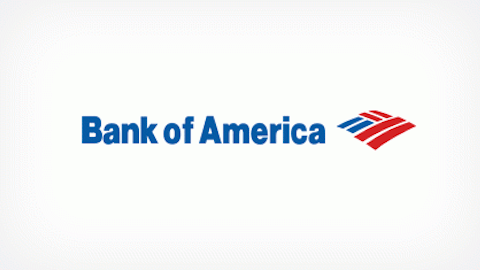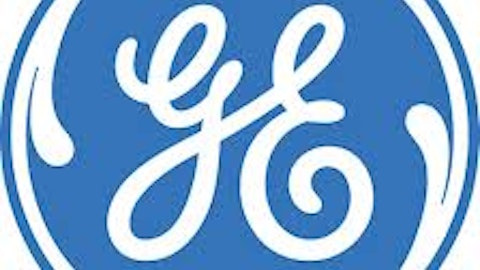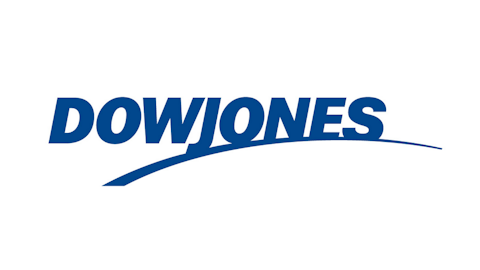Although many of the big banks may be back on track after being bailed out by Uncle Sam, there may be some better alternatives for shareholders in terms of both growth of share price and dividend income. In this article, I will discuss why bigger may not always be better for investors’ portfolios, and how investing in smaller financial entities like U.S. Bancorp (NYSE:USB) could prove to be a better option in both the short and long-term.

Being the fifth largest bank in the U.S., U.S. Bancorp has been considered the market leader with regard to profitability among the top 100 banks since the recent recession. During 2012’s third quarter, this bank actually set an all-time quarterly earnings record with its return on assets of 1.7%.
For the fourth quarter of 2012, U.S. Bancorp posted earnings per share of $0.72 based on its $1.42 billion in that quarter’s earnings – which represented an increase of 4% over its 2011 earnings per share of $0.69. Overall for 2012, the firm came in with earnings of over $5.6 billion, or $2.84 per share – representing a substantial increase of 16% over its 2011 figures.
One of the reasons for the company’s earnings jump could be the fact that it has continued to grow its loan portfolio enough to offset any possible declines in net interest margin. U.S. Bancorp possessed $223 billion in loans at the end of 2012 as compared to $210 billion at the end of 2011. Based on this growth in loans, the net interest margin fell in the fourth quarter of 2012 to just over 3.5%.
Other factors that have helped to keep U.S. Bancorp strong include a growth in commercial loans outstanding (16% between year-end 2012 and year-end 2011), stronger credit profiles, and falling credit costs due to growth in deposits.
In addition, the sentiment by some is that now is the time for investors to consider “quality over recovery potential.” Recently, Stifel Nicolaus & Company analyst Christopher Mutascio stated in a report that, “The market is allowing investors to purchase low-risk franchises with strong management teams that are generating profitability ratios well in excess of the industry’s average at ‘no extra charge.'”
U.S. Bancorp shares are trading for over 10 times its 2014 consensus earnings per share estimate of $3.30 – and the firm has lately been a stronger earnings performer than some of its much larger counterparts such as Wells Fargo & Company (WFC). In 2012, U.S. Bancorp held a return on average assets of over 1.6% – and it has allowed this figure to dip below 1% only once, in 2009.
Currently, U.S. Bancorp provides shareholders with a dividend of $0.78 per share, equating to a dividend yield of 2.3%. With a reasonable P/E ratio of 12.05, coupled with earnings per share of 2.84, the company’s share price is expected to rise by roughly 8% over the next 12 months. Shares are presently trading near their 52-week high, but I feel they could still provide a great value if purchased at or under $35.
Taking a Closer Look at Other Financial Industry Colleagues
Unlike many of the regional banking institutions, larger entities such as Citigroup Inc. (NYSE:C) and Bank of America Corp (NYSE:BAC) are trading a substantial discounts to book value. For instance, recently the shares of Bank of America were trading in the range of 9 times its consensus for its 2014 estimate for earnings of $1.29. Likewise, Citi is presently at 8.1 times its consensus for its 2014 $5.18 earnings per share estimate. These low valuations, though, are due in large part to the recent price volatility over the past few years – as well as to the firms’ weak overall earnings.
Bank of America, for example, over the past five years, has had a return on average assets that spanned anywhere from a negative 0.09% to 0.2%. Similarly, Citi’s return on average assets had a range of between negative 1.28% to 0.57% during that same five year time period.
Another banking industry powerhouse, Wells Fargo, is currently trading at a lower P/E ratio (10.50) than Bank of America (48.33) – even though Wells is thought to be a bit less risky for investors. Here, over the past five years, Wells’ return on average assets has steadily increased from its 2008 figure of 0.44% to 1.41%. Over the past decade, Wells has kept its number in excess of 1%.
One big banking entity that investors may wish to hold back on is JPMorgan Chase & Co. (NYSE:JPM). A reason for this has to do with recent scandals that have plagued the firm, including interest rate fixing and money laundering. In addition, the company’s chief investment officer sustained a loss of over $6 billion in just the first three quarters of 2012. This equates to JPMorgan’s largest trading loss in its long history.
Overall, global regulators have made a call for the strengthening of risk management, as well as an increased oversight – primarily in response to the many scandalous issues that JPMorgan and other of its contemporaries have been involved in. JPMorgan currently provides investors with a $1.20 per share dividend, equaling a dividend yield of 2.5%. Although based on the above issues, some analysts have downgraded the company’s shares from Buy to Hold.
The Bottom Line
Over the past few years, it seems that the big money has been made on shares of banking firms that are recovering from previous losses, as well as from the mass slowdown in lending. However, now, I feel that investors should strongly consider the “lower risk” institutions like U.S. Bancorp.
So far in 2013, U.S. Bancorp has returned 7%. This follows a stellar 21% return for 2011. And, the shares currently are trading at 2.5 times its tangible book value. The firm also possesses an estimated $3.30 earnings per share for 2014.
With U.S. Bancorp’s increasing loan portfolio, coupled with its growth in net interest income, falling credit costs due to growth in deposits, and stronger credit profiles, U.S. Bancorp is a great asset to hold for both the short and long-term horizon.
The article Bigger Is Not Always Better: Banking in Early 2013 originally appeared on Fool.com and is written by Maxwell Fisher.
Copyright © 1995 – 2013 The Motley Fool, LLC. All rights reserved. The Motley Fool has a disclosure policy.




